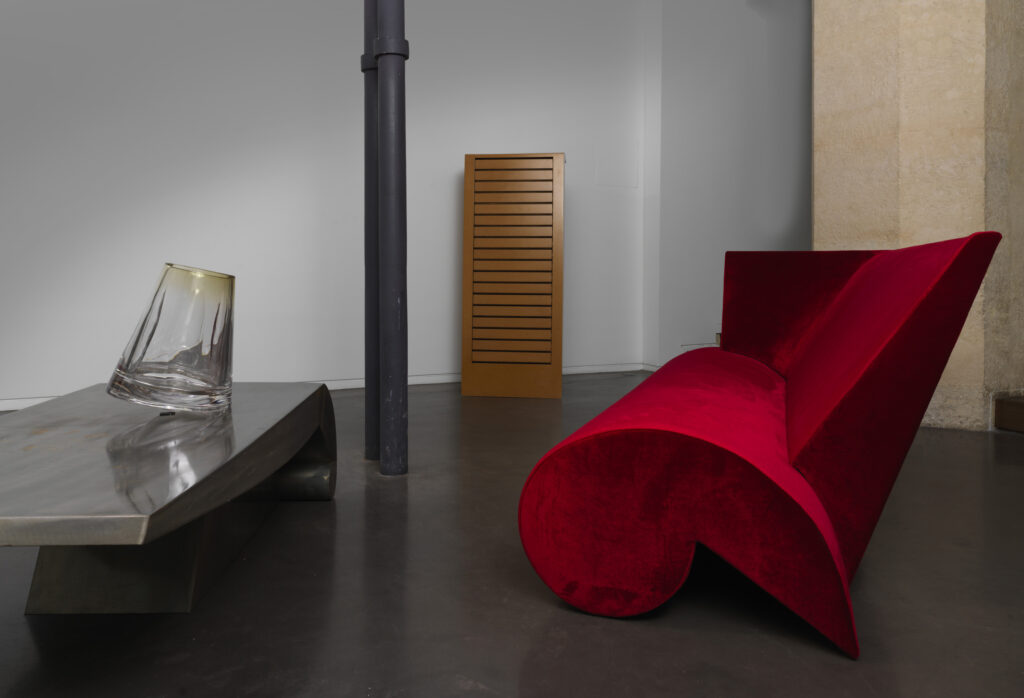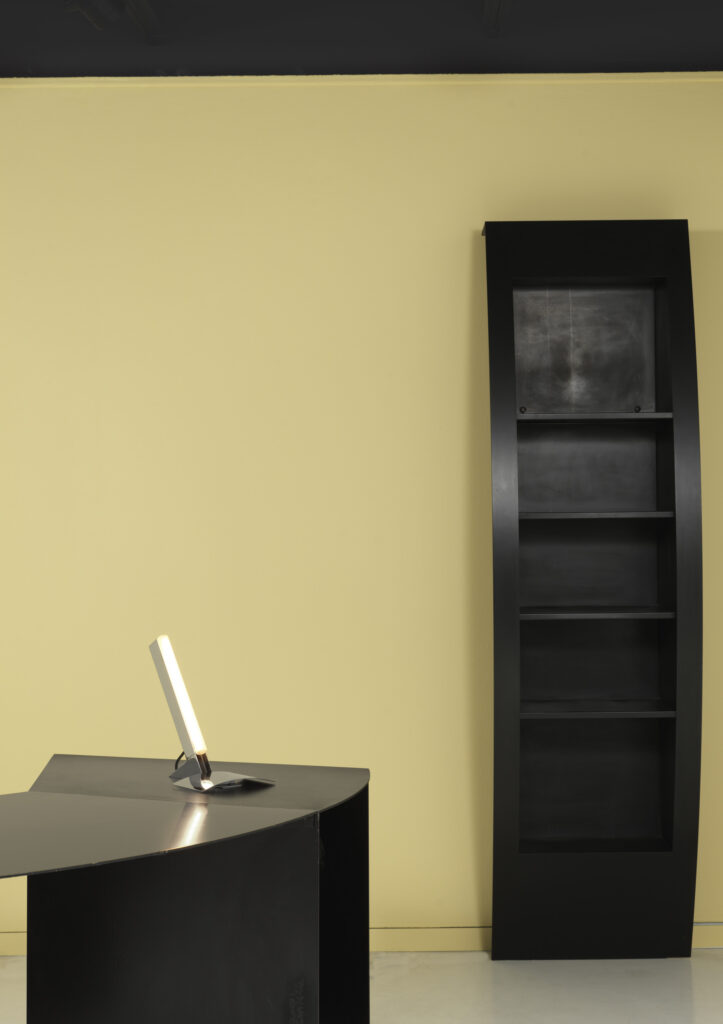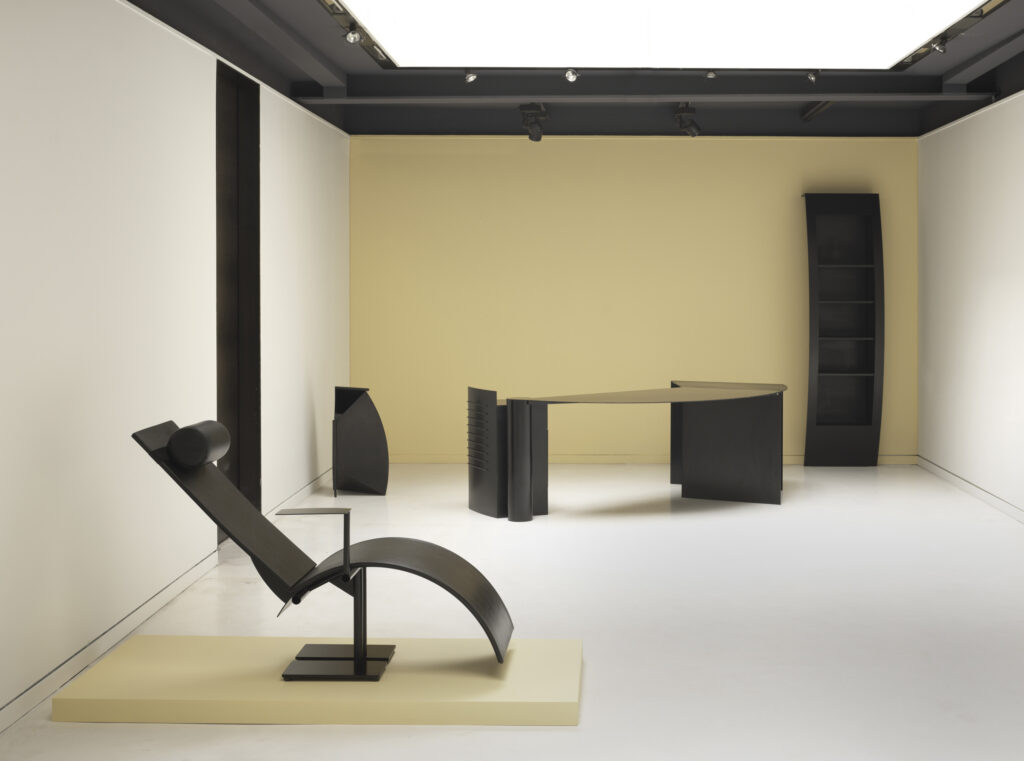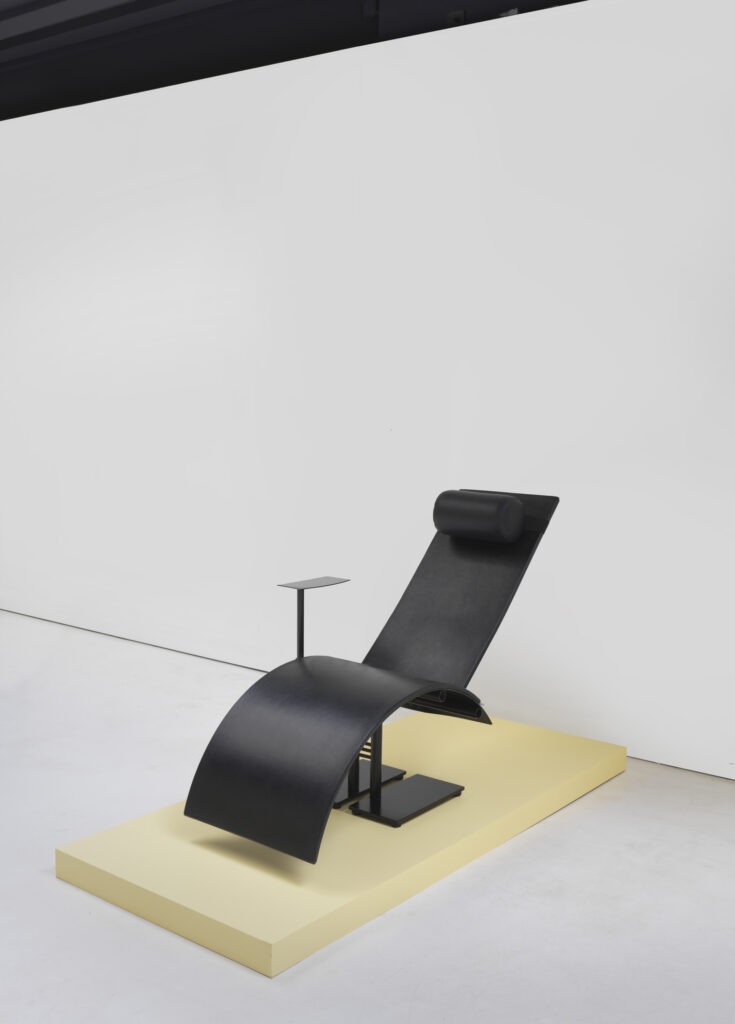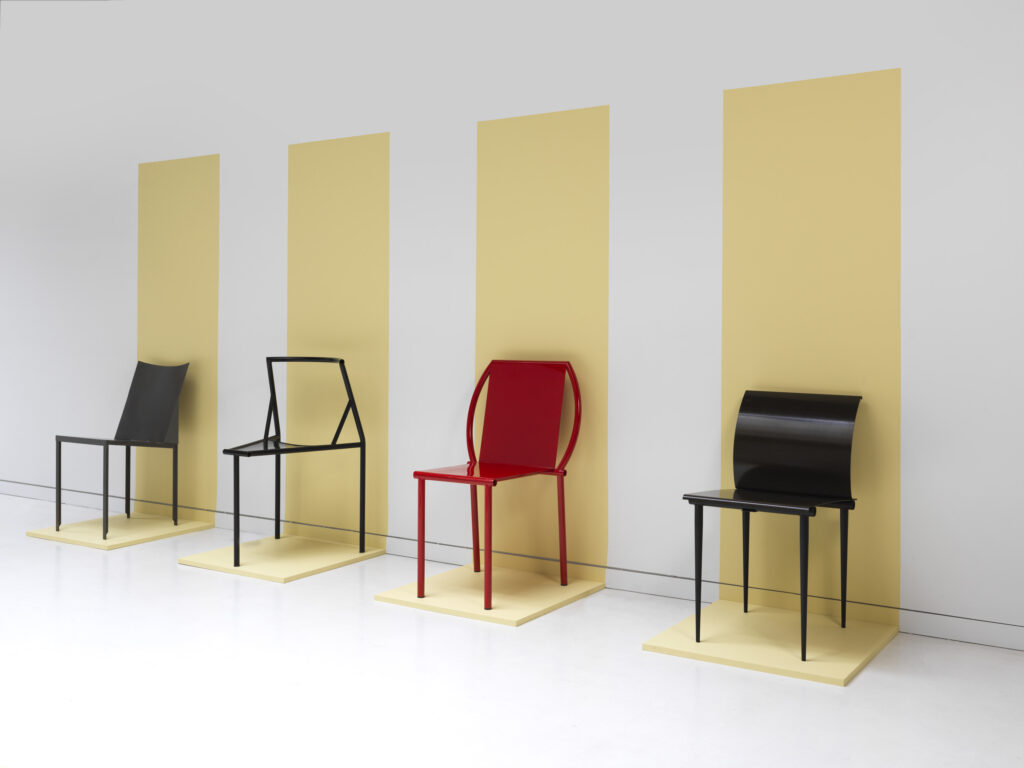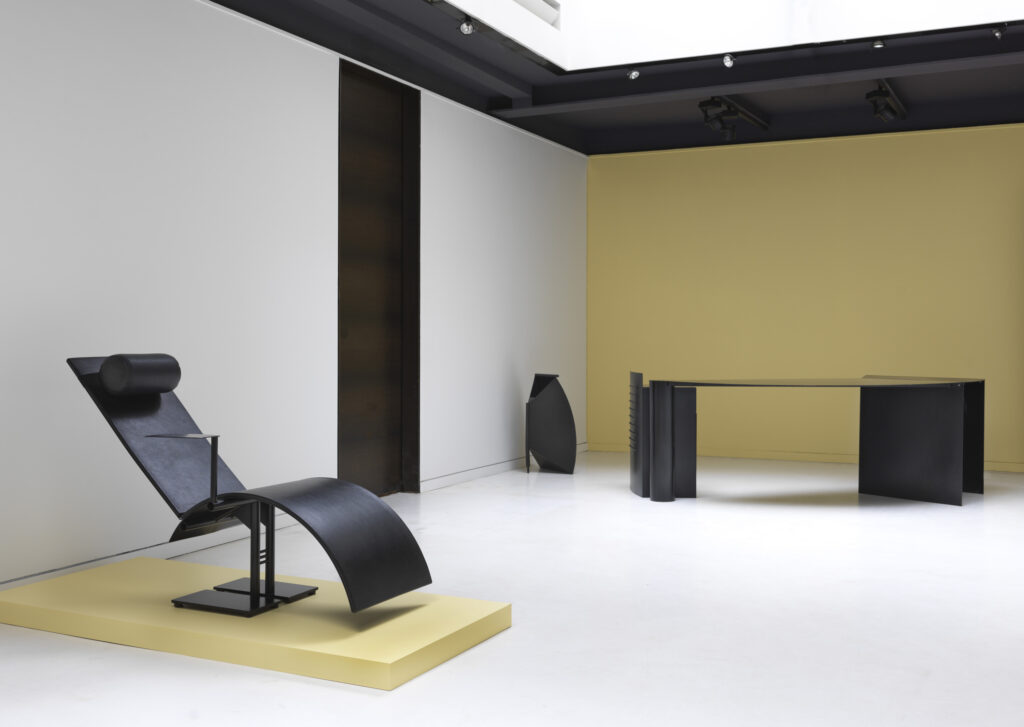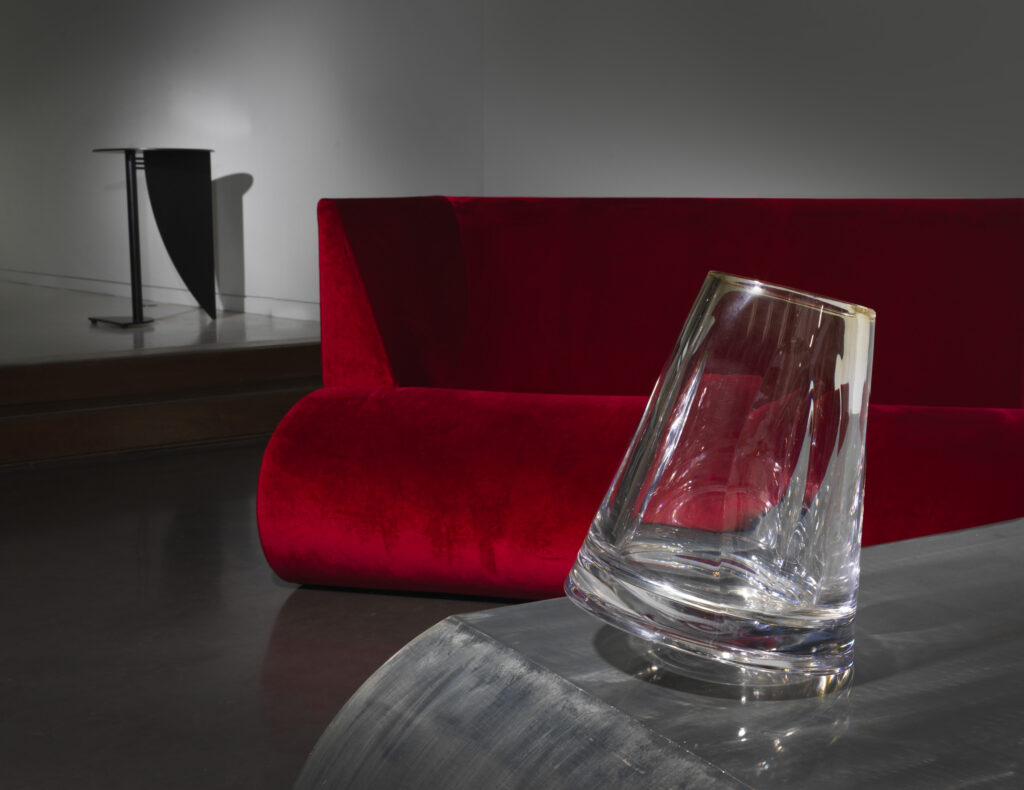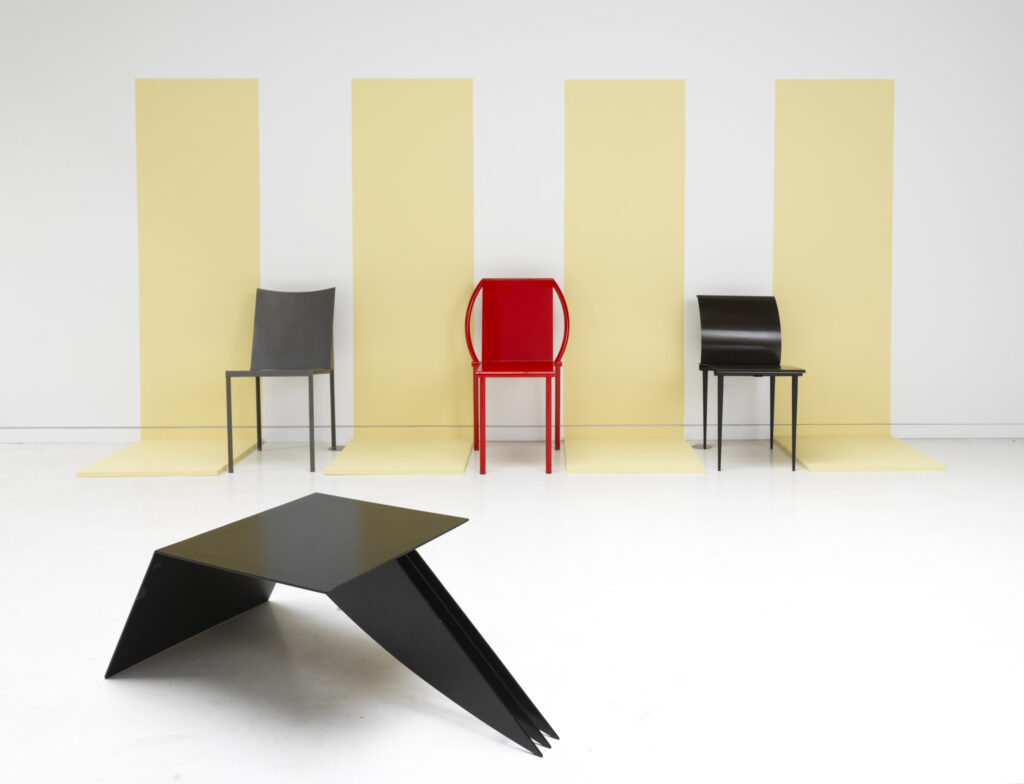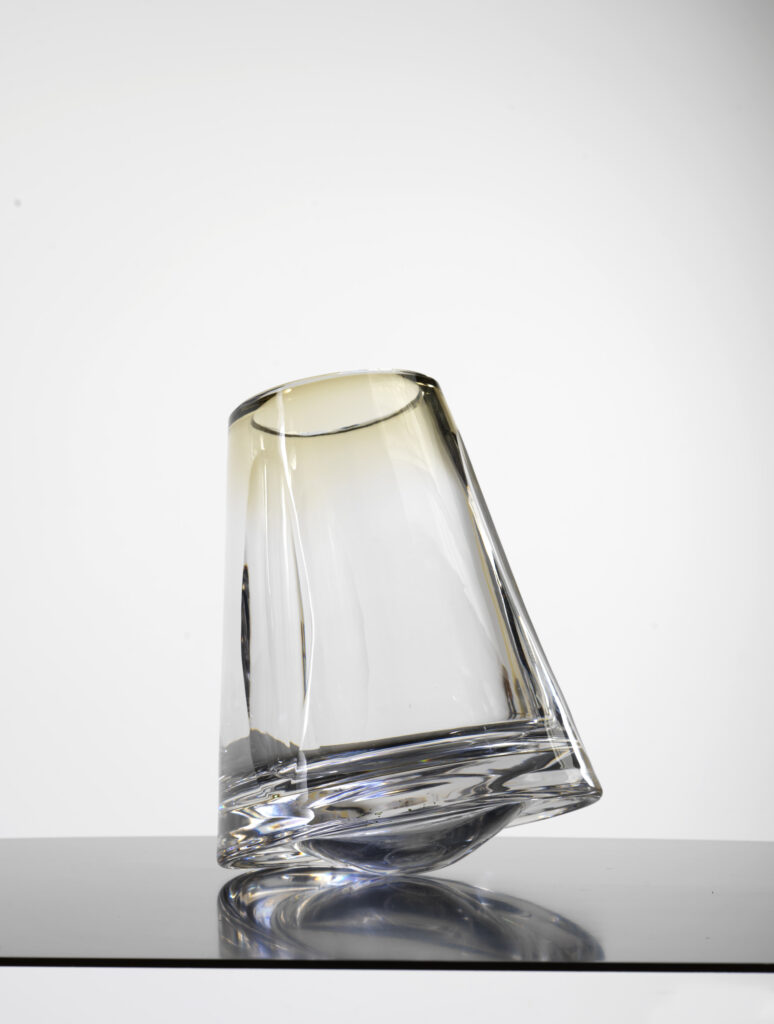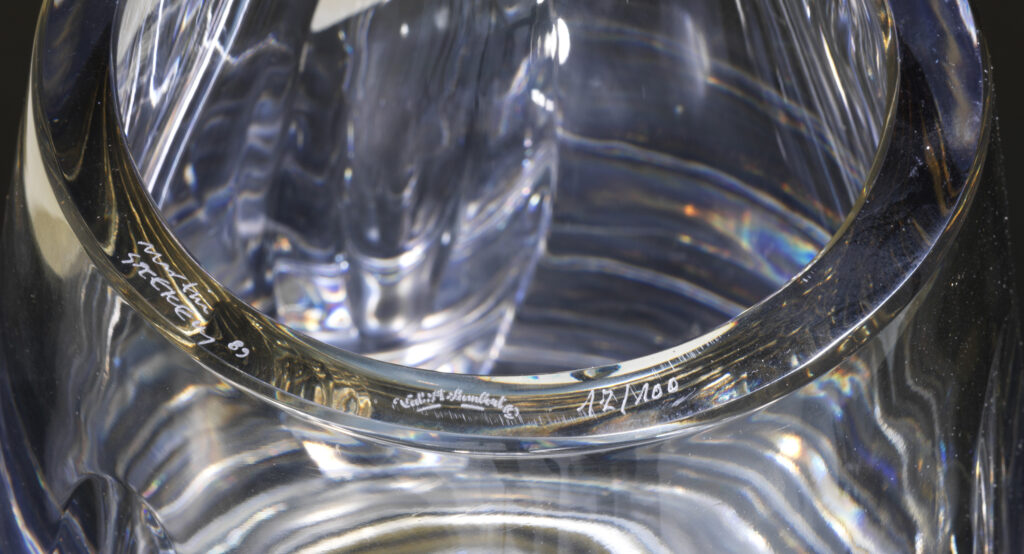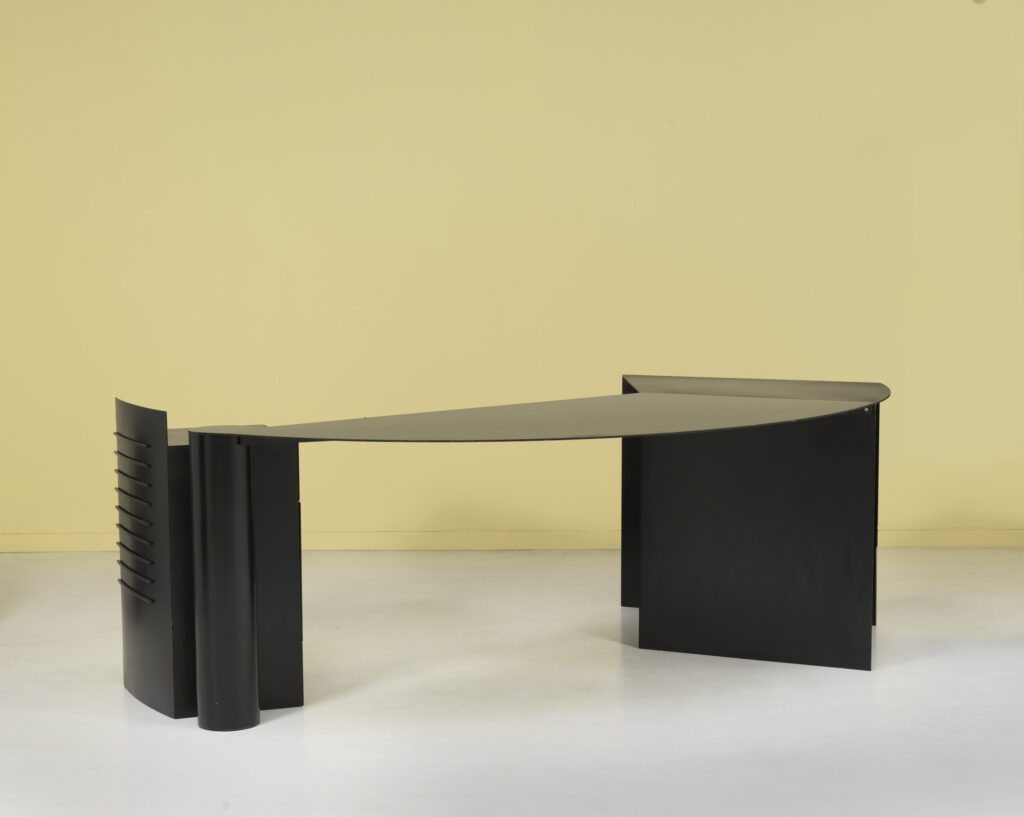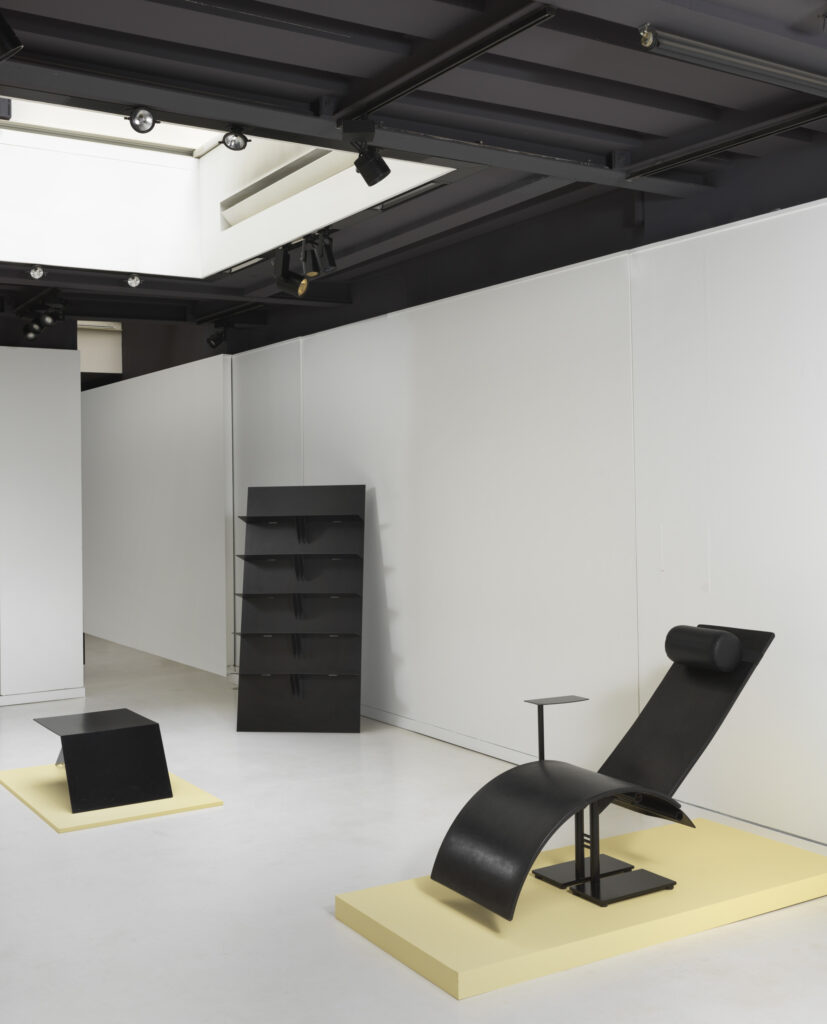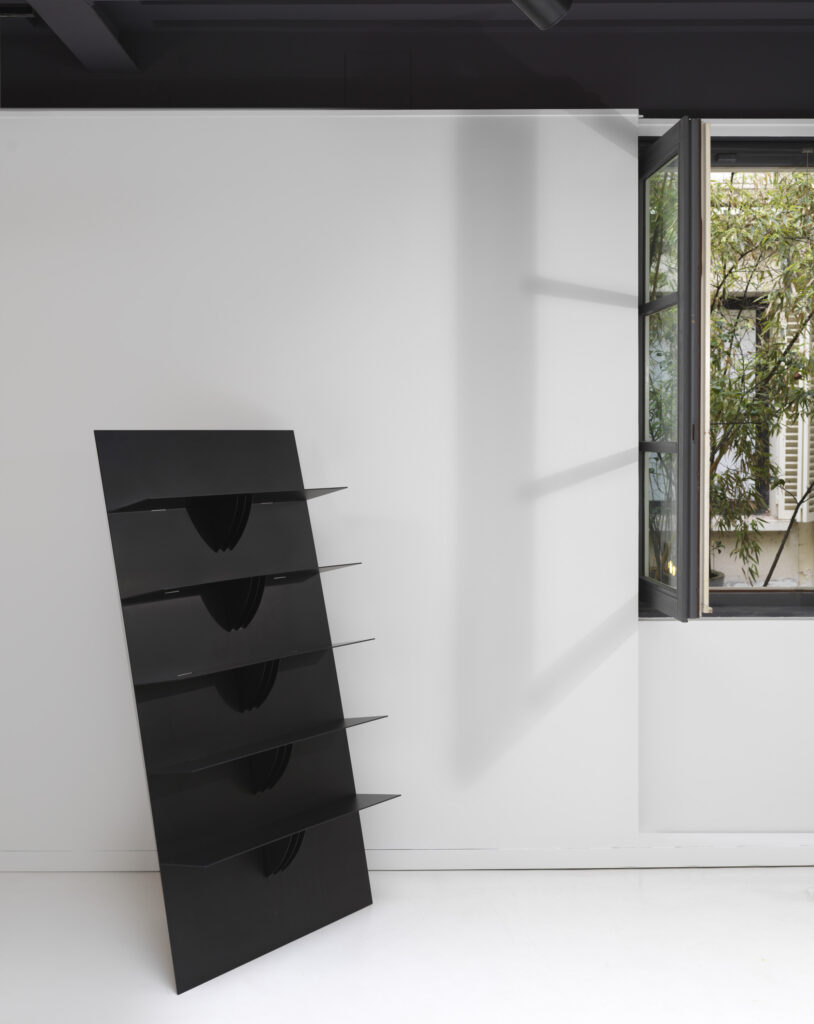Martin Szekely (b. 1956) was one of the leading figures in the avant-garde design movement of the 80s. It is only recently that his early work from that time has come to the forefront of the world of collectible design; desired by museums and private collectors alike, and praised for its contribution to the design culture of the 80s. Dealers are regularly engaged in bidding wars for every lot that comes to the market, and thus I was thrilled to hear about the new exhibition “The 80s: Martin Szekely” held at Jousse enterprise in Paris. Focusing on the world that the French designer created during the early years of his career, this show comes to illuminate his couture, rarely seen objects that demonstrate his pioneering Minimalist and High-Tech as a milestone of 80s culture.
Matthias Jousse has spent years preparing this show and collecting the 30 objects on display, which includes those from the PI collection (1982-1986) and the Containers series—which he created for Néotù gallery in 1987. Items displayed range from the Presse Papier storage, Passif coffee table, Toro chair, and Stoléru sofa, to seats and an ashtray drawn for the Hérouville theater, along with the unique Président desk produced by the French editor Tribu.
Szekely, the son of Vera and Pierre Szekely, is among the most intriguing artists of postwar France. His parents were both Hungarians who fled Nazi-occupied Budapest and reached France in 1946. In the years after WWII the two founded a ceramics collective along with André Borderie, simply called Székely-Borderie, and began creating objects in clay with a style that was naïve, colorful, and whimsical—representing the spirit and atmosphere of the postwar era. They eventually went their separate ways. Martin Szekely studied at the Ecole Boulle and the École Estienne and has worked as a product designer for such brands as Dom Pérignon, Hermés, and JC Decaux. His work can be found in the collections of Centre Georges Pompidou, Musée des Arts Décoratifs, the Cooper Hewitt Museum, and MoMA.
My personal favorite body of his early work is from the collaboration with Galeire Néotù, who is known for being a pioneer in the territory of collectible contemporary design in Paris (and a short presence in New York). It is here that Szekely created the objects that have raised him into the pantheon of modern design and represent the narrative of design culture at that time. His PI Chaise Longue, crafted in metal and leather, has come to symbolize the minimalist High-Tech style of the 80s and is included in many design history publications. It belongs to the Late Modernist style of architecture and design of the early 80s, which incorporated elements of High-Tech while making use of alumniumu, steel, and glass. This piece of furniture has few links to the past and instead carries a strong reference to mechanical structures. “Its drawing,” wrote the gallery’s founder Pierre Staudenmeyer, “is so self-evident, that it can be summarized in 5 pencil lines.”
Seeing a wide body of work under one roof is a way to understand Szekely’s objects in relation to spaces and to each other, while also providing an opportunity to meet his materials, which are at the core of his expression. This exhibition at Jousse enterprise gives us a rare, potentially once-in-a-lifetime opportunity to experience the early career of one of the most gifted furniture designers of our time.
September 30 to October 29, 2022 at Jousse entreprise; photos courtesy Jousse Enterprice; photography Fabrice Gousset.
